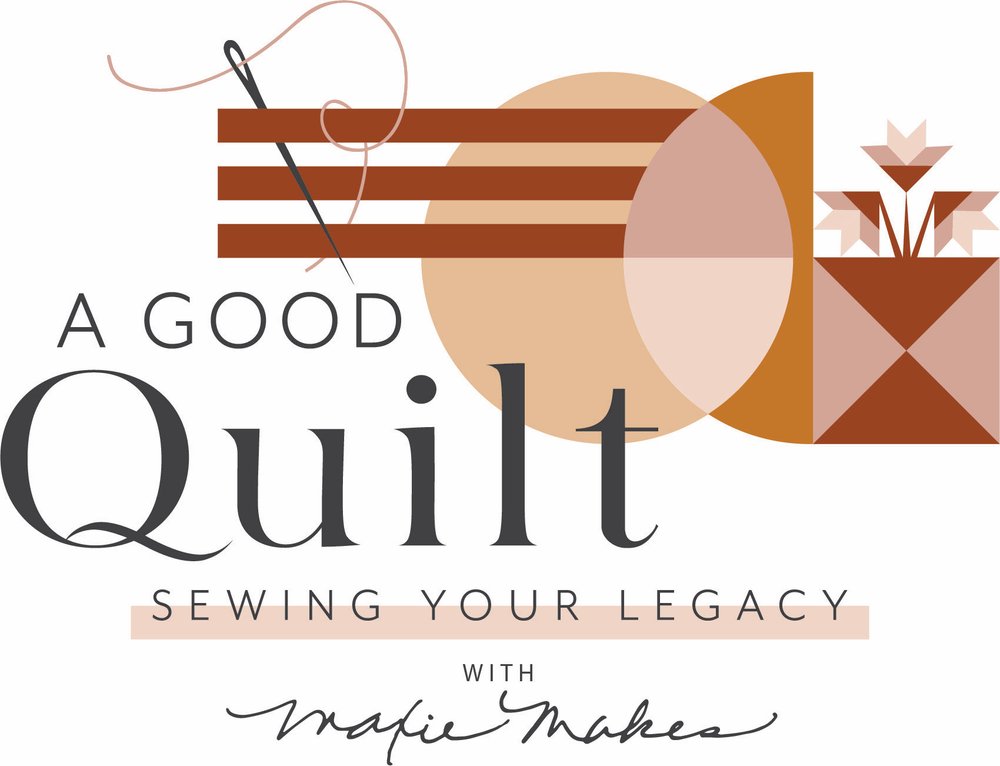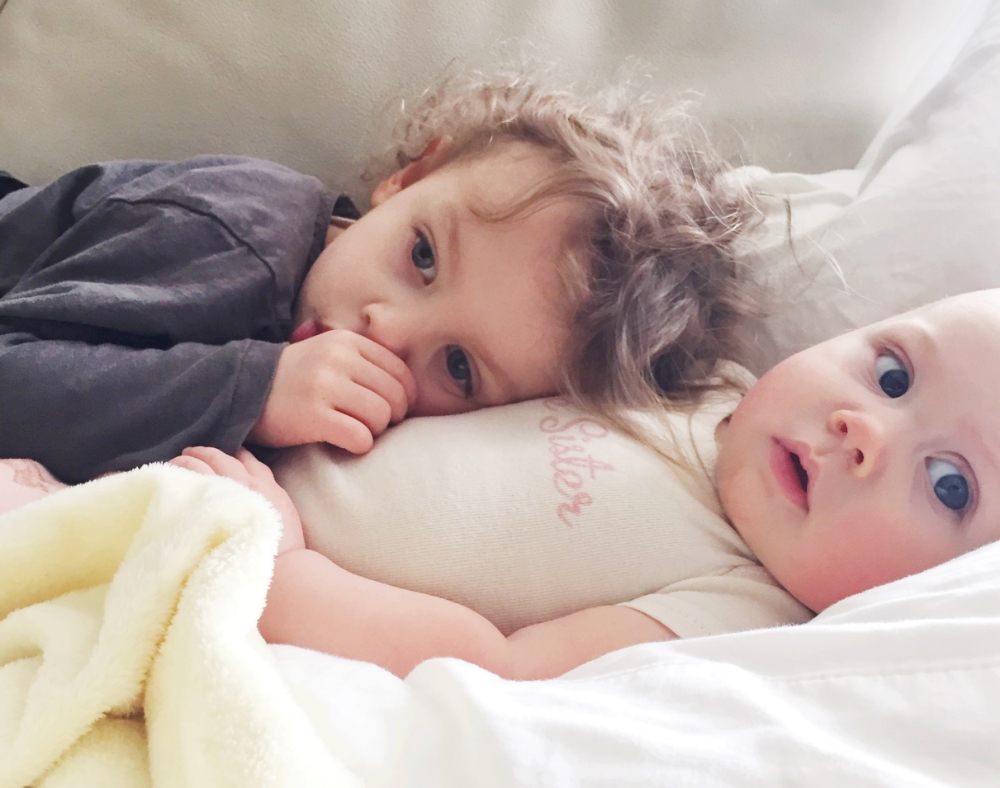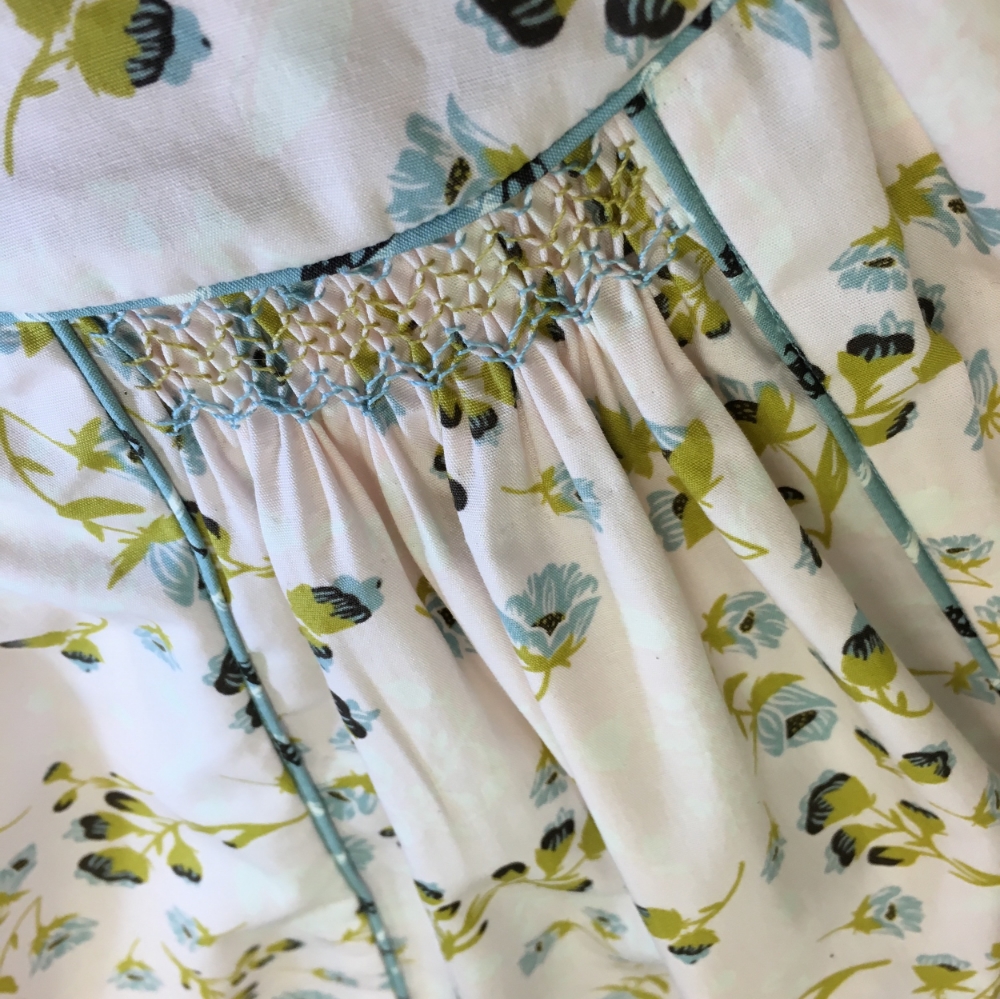You probably know already that I'm the happy Mimi of a little 2 year old boy named Bear, and you also probably know that he has a little sister named Ollie Doe. Bear affectionately calls her "Ah-ee Doe". I love how they already love each other.
When my daughters were small I enjoyed smocking and heirloom sewing, so I thought I'd try my hand at something a little modern with a touch of the old fashioned.
This little top is made from Bonnie Christine's latest line, Forest Floor, for Art Gallery Fabrics. We've been working on projects for the Lookbook that will accompany the line's release, and I thought I'd share a little peek with you today.
The first thing to do was to find a pattern that would give me a place to insert the smocking. Kwik Sew 3689 fit the bill with a center gathered front section, just below the yoke. I cut that part of the pattern, adding a couple more inches at the fold to allow for a little fuller panel.
The piping, made from bias strips, is applied between the seams. I have two presser feet that help to make the piping smooth and perfect. In the above photo, left, I am using the Mini Piping Foot, which has a small tunnel under the foot that rides over the cord inside the piping. Moving the needle into a position that will sew just one thread closer to the cord will make that piping thread (shown with white thread) invisible.
The photo on the right shows my preferred way to attach the two panels. The normal technique is to sandwich the piping between the two panels placed right sides together and sew, hoping to sew at just the precise place that won't be too close or too far away from the piping. Instead, I sew the piping to one panel (which is what is happening in the left photo) and press the seam allowance to the wrong side, flipping the piping over on the panel's edge. Then I just lay the piped panel over the seam allowance of the piece it will be sewn to, pin in place and stitch in the ditch, catching the seam allowance of the unpiped panel in the process. I use the Edge Joining Foot for this technique, and it really is very helpful when sewing piped fabric to gathers or smocking because I am working from the top side and all fabrics are visible.
I think Ollie Doe likes it! For more pictures, just watch for Art Gallery Fabrics' Look Book link here soon!
Thanks for visiting! Happy Sewing and God bless! Maxie







